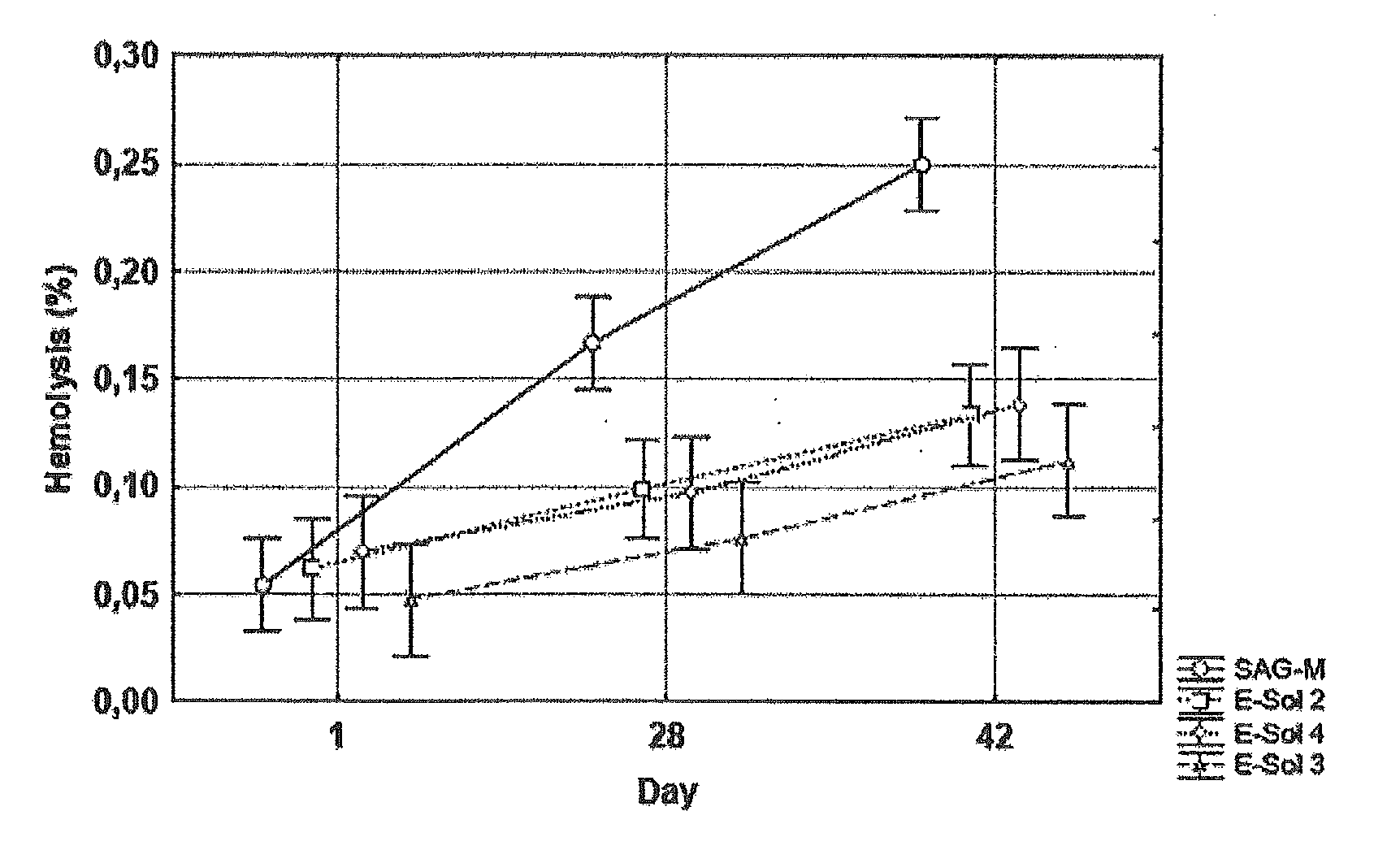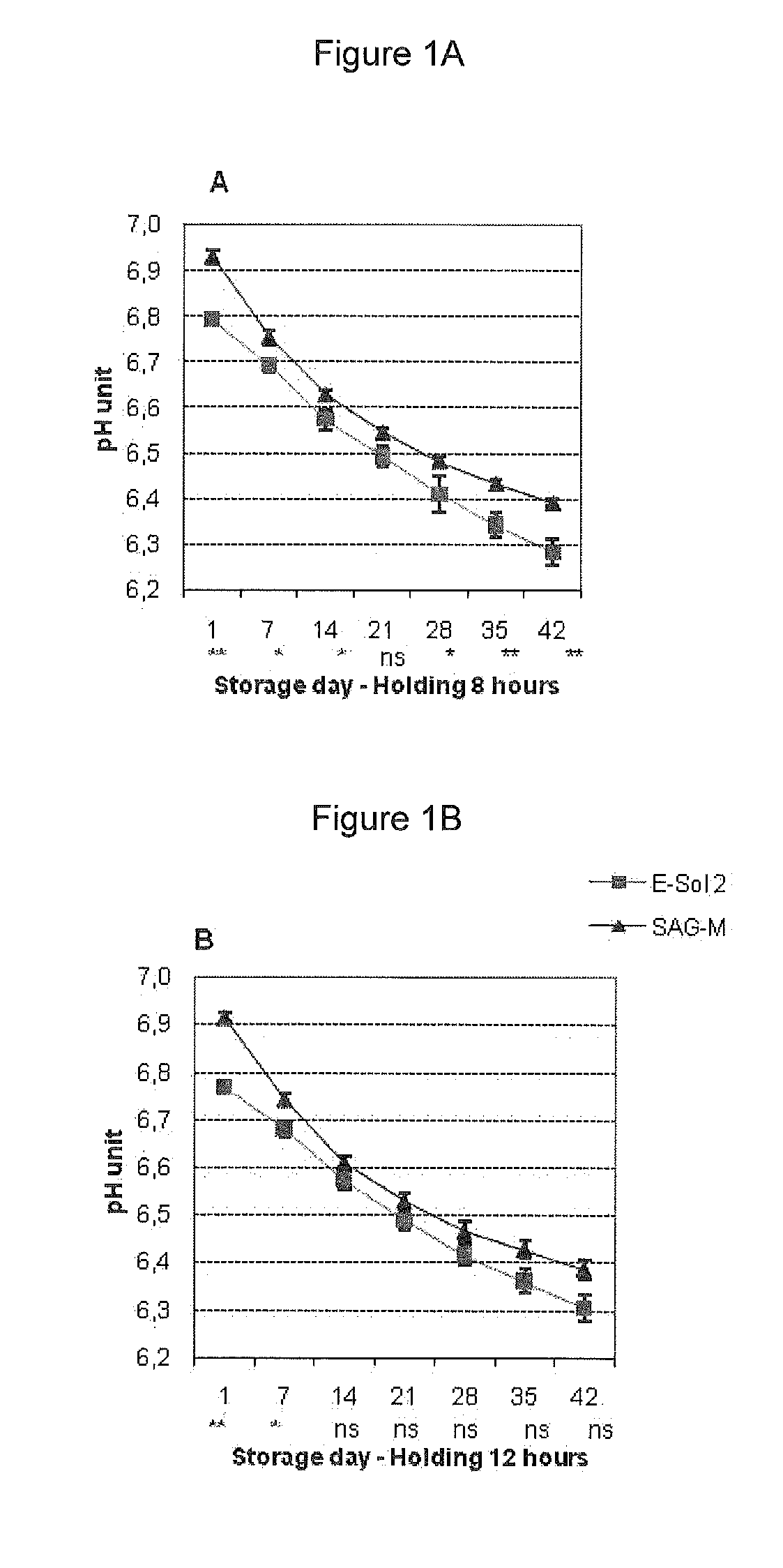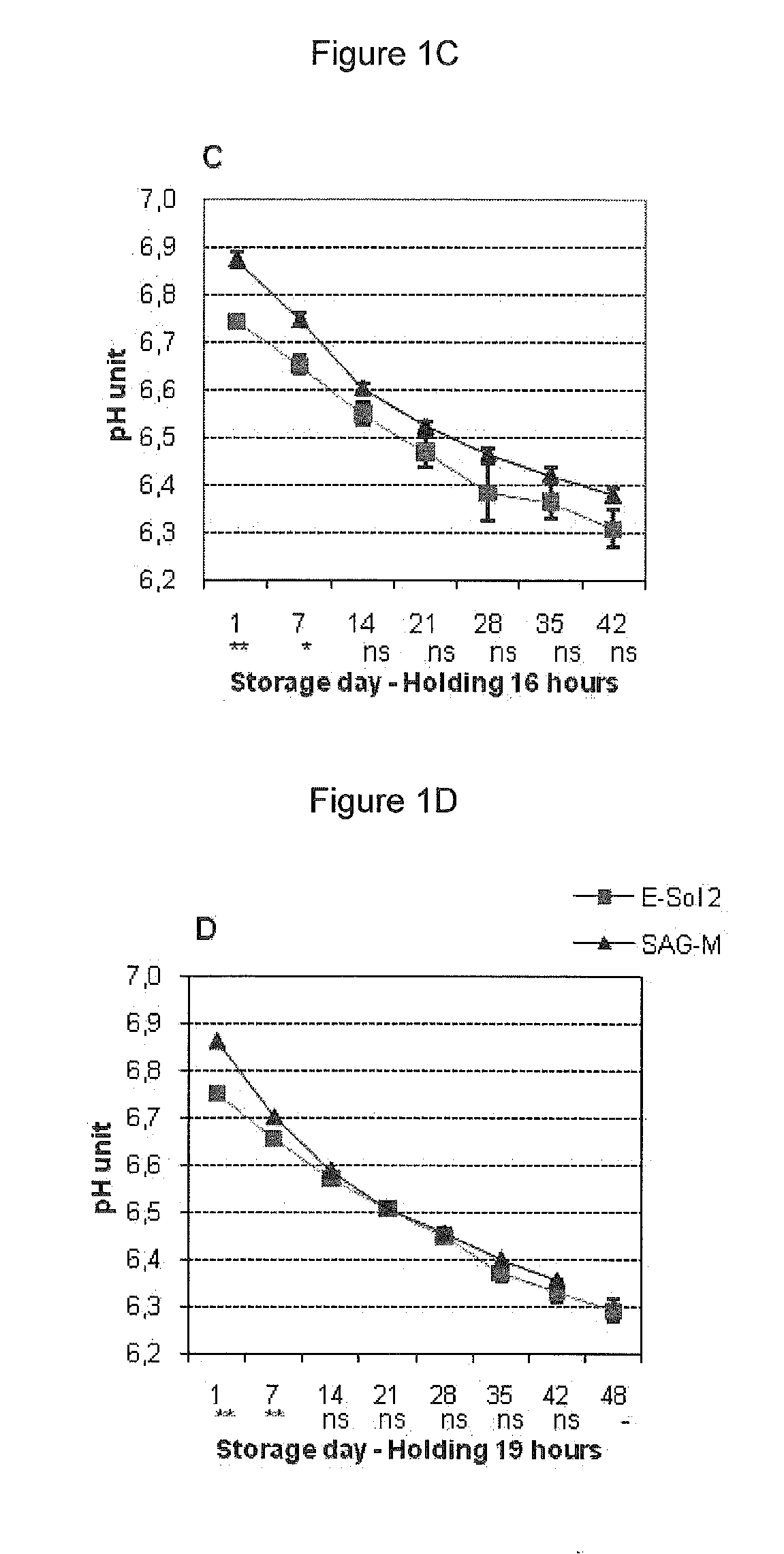Red Blood Cell Storage Medium For Extended Storage
a technology of red blood cell and storage medium, which is applied in the field of storage solutions for blood components, can solve the problems of cell metabolic rate, blood for 8 or more hours is not without its, and the rapid fall to lower ph levels
- Summary
- Abstract
- Description
- Claims
- Application Information
AI Technical Summary
Benefits of technology
Problems solved by technology
Method used
Image
Examples
example 1
[0046]Units of whole blood (450±50 ml per unit) were collected by methods known to those of skill in the art and about 63 mls of CPD was added for each unit of whole blood. The units of whole blood were cooled to room temperature after collection using cooling plates (ThermaSure™, Sebra, Tucson, Ariz., USA), and the whole blood units were then held at room temperature (about 20° C. to about 24° C.) for 8, 12, 16, or 19 hours.
[0047]Before concentration of red blood cells, whole blood units were leukocyte-reduced using inline whole blood leukocyte reduction filters. Red blood cells were concentrated using centrifugation to prepare concentrated red blood cell fractions and plasma using a hardspin centrifugation program followed by separation with T-ACE equipment (Terumo, Leuven, Belgium).
[0048]In Example 1, two different red blood cell additive solutions were added to the units of red blood cell concentrate: either 150 ml of E-Sol 2 (test) or 100 ml SAG-M (reference) (see Tables 1 and ...
example 2
[0063]In another example, six units of whole blood were collected by methods known to those of skill in the art using approximately 70 mls of CPD anticoagulant per unit of whole blood. The whole blood was then held at room temperature (approximately 22° C.) for 21-23 hours. Concentrated red blood cells were prepared from each unit by centrifugation using standard methods. For each unit of whole blood, 100 mls of storage solution of the type disclosed herein (e.g., E-Sol 3 of Table 2) was added to the concentrated red blood cells. The resuspended cells were then held for 2 hours at room temperature and then passed through a filter (soft housing red cell filter, Fenwal) to deplete leukocytes. The leukocyte-depleted red blood cell fraction was then stored (RBC storage bag, Optipure RC Set, Fenwal) at 4° C. until the completion of the study.
[0064]Samples were taken during processing and at days 1, 7, 14, 21, 28, 35, 42, 49, and 56 for analysis of intracellular ATP levels, hemolysis, glu...
example 3
[0068]Red blood cell storage solutions according to the disclosure were also assessed using red blood cells separated from whole blood with an automated red blood cell collection system (Alyx, Fenwal, Inc.). In this case, the whole blood was not held before separation into blood components. Also, the ACD-A (acid, citrate, dextrose) anticoagulant was used instead of CPD. Separated red blood cells were stored with either E-Sol 2, E-Sol 3, E-Sol 4 or SAG-M for up to 42 days and various cellular parameters assessed using methods described previously.
[0069]As shown in FIG. 12, red blood cells separated with an automatic collection system and then stored in either E-Sol 2, E-Sol 3 or E-Sol 4 showed statistically significant lower hemolysis throughout from about day 5 of the storage period compared to cells stored in SAG-M. As degree of hemolysis is generally considered as the single best indicator of cell function, these results indicate that the E-Sol solutions discussed herein (e.g., E-...
PUM
 Login to View More
Login to View More Abstract
Description
Claims
Application Information
 Login to View More
Login to View More - R&D
- Intellectual Property
- Life Sciences
- Materials
- Tech Scout
- Unparalleled Data Quality
- Higher Quality Content
- 60% Fewer Hallucinations
Browse by: Latest US Patents, China's latest patents, Technical Efficacy Thesaurus, Application Domain, Technology Topic, Popular Technical Reports.
© 2025 PatSnap. All rights reserved.Legal|Privacy policy|Modern Slavery Act Transparency Statement|Sitemap|About US| Contact US: help@patsnap.com



